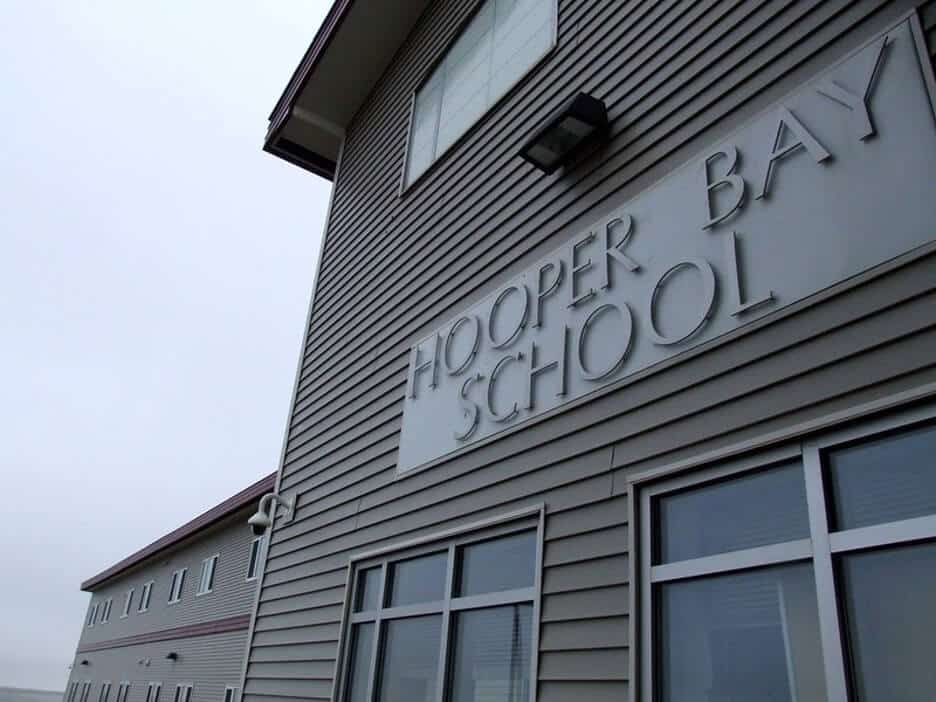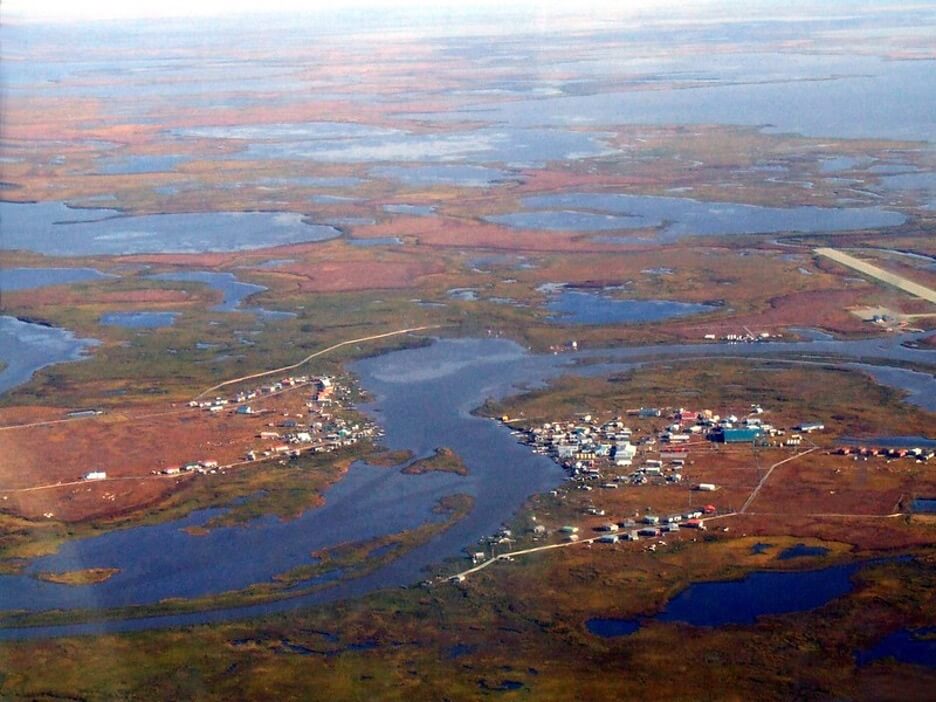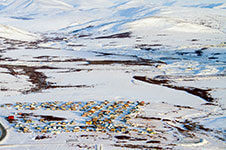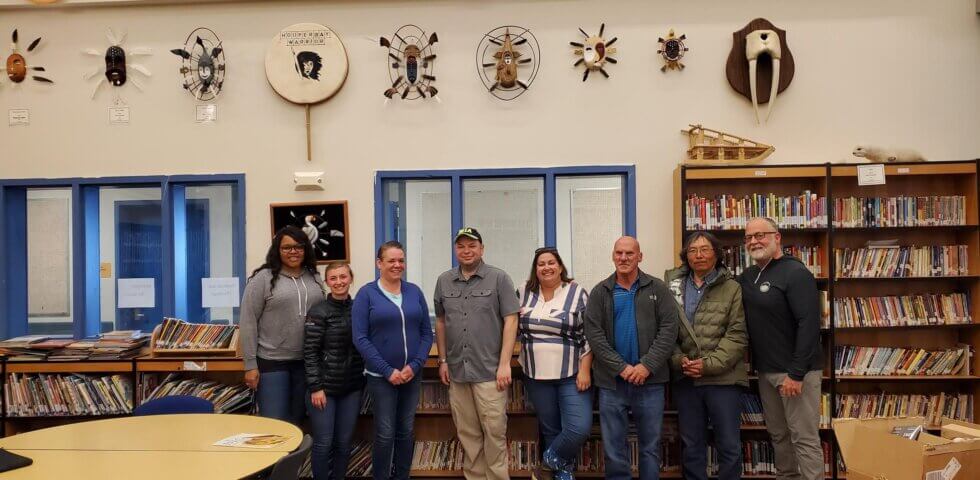The COVID-19 pandemic put a major strain on schools, students, and parents as remote-learning temporarily replaced traditional schooling. For many Alaskan schools, this rapid shift posed a significant problem. Many communities in Alaska lack access to affordable, reliable broadband, and educators struggled to find solutions to continue providing lessons when students didn’t have access to the internet in their homes.
While poor broadband access had been a long-standing issue in rural areas of Alaska, the pandemic brought to light just how essential it is to bring the gold standard of connectivity to these communities and push toward providing broadband for all. Investment in broadband infrastructure has been a hot topic in the past year, and the American government has already dedicated about $65 billion to the bipartisan infrastructure bill passed in November of 2021.
Bridging the digital gap in Alaska and across the globe is an issue our team at Quintillion is deeply passionate about. Our fiber optic cable system is the first subsea fiber optic cable network in the Alaska Arctic. This system has connected thousands of previously underserved Alaskans, and we’re always seeking new opportunities to work with communities across the state and local internet service providers to connect even more Alaskans.
The Intranet: How One School Navigated Remote Learning During the Pandemic

For this blog, we interviewed Paul Galvez to share one story of how the Hooper Bay School of the Lower Yukon School District developed a solution to help mitigate some of the challenges of remote learning and keep the community connected during the pandemic.
In 2021, Paul and his wife traveled to Hooper Bay, Alaska where Paul was hired by the Lower Yukon School District as a media specialist, a position which was covered by allocated COVID funding. One of the most significant issues the district was facing at that time was that many students didn’t have home internet, and that the internet service available was insufficient to meet the needs of the community due to a range of issues. These include unreliable service loss due to weather interference, such as ice build-up on the region’s internet towers, and low-bandwidth availability due to a large population of people needing service.
Additionally, during lockdowns, students struggled to stay connected with their friends and others in their community. Paul explained, “The Yupik Eskimo community is very community oriented. They didn’t want to be locked down – especially the kids. They wanted to be out there with their friends.”
The Intranet Networking System
Paul worked with the Lower Yukon School District to engineer and implement a networking system called the Intranet that would enable students to connect with their teachers for assignments and each other. It also allowed the school to broadcast basketball games to students’ homes. With this system, students could choose to have an Intranet antenna installed at their homes for free, which would provide a wireless link from the school to each student’s household. The Hooper Bay Charter School was the first to attempt utilizing the network, allowing Paul to run a successful beta project at the charter school before extending this service to the rest of the Hooper Bay School community.
The Intranet vs. the Internet
The Intranet is unique from the internet. The internet can be accessed by anyone. It is a public, worldwide system that anyone with service can access. For example, the computers at the Hooper Bay School have access to the Internet, which is the same network you would access from a home computer.
The Intranet, on the other hand, is a separate and private connection. The Hooper Bay Intranet is connected to the school, providing limited access to households. In this case, students could use teleconferencing technology with other students on the network and access basketball game broadcasting, but they could not use the Intranet to surf the web, play an online game, or shop online.
Challenges Installing the Intranet
Paul explained how the biggest challenge they faced was installing antennas in people’s homes. Between COVID restrictions and weather issues, not being able to physically enter people’s homes prevented some households from receiving the Intranet. Sea Lion Corporation aided in this effort, providing personnel to help install the antennas.
When asked how they navigated these challenges, Paul said “time, patience, and resilience” were essential for moving forward. If a storm prevented the installation team from being able to safely set up an antenna, they would have to wait until the weather cleared to attempt the installation again. Similarly, if a new wave of COVID-19 or tuberculosis hit the community, they would need to wait until it was safe to access people’s homes. Because of these challenges, only a portion of the community was able to have the Intranet installed – approximately 50 to 75% of students.
Community Reception of the Intranet
When the Intranet first rolled out, many students and families were excited about the technology. Paul emphasized that the community was most excited about being able to watch basketball games from their home, especially when COVID, weather, or travel restrictions prevented them from watching the games in person. “Basketball is really huge down there, so I can’t emphasize enough how important that was. Some people weren’t sure if they wanted the Intranet, and as soon as we told them they could watch basketball they would say ‘Yeah, please do it!’”
While the Intranet didn’t roll out for 100% of students, making it difficult to use consistently for classes or educational purposes, those who had access to it valued it as a tool to interact with their friends and feel more connected to their community. Paul recounted one story of a boy in the community who experienced a severe traumatic brain injury and couldn’t return to school. The school provided the boy with a laptop and Intranet connection so he could call and interact with his friends while in the hospital and recovering at home.
The Big Picture: Long-Term Solutions for Bridging the Digital Divide

The Intranet was a useful solution for helping students in Hooper Bay stay connected during the pandemic, and it is still live and used today. However, it was developed to be a temporary solution for a larger overarching issue.
The digital divide has profound effects on communities, and people throughout Alaska. For the Hooper Bay and the Yukon community, Paul stated that the digital divide is one of the biggest issues the community is facing and that many problems stem from that lack of access.
Internet for individual households is limited and very expensive, and individual households aren’t the only ones being affected by poor service. The school’s internet is very limited, which does not allow for all resources to be available to educate students at the same time. Online research, watching videos, and video conferencing have to be done at different times to not interfere with each other. Video conferencing from Hooper Bay is punctuated with lag, frozen screens, and dropped calls. The Hooper Bay School still keeps a traditional landline phone on standby for every meeting due to the frequent interruption of internet service.
Paul also mentioned the impact the lack of broadband had on medical care in the community. During their time in Hooper Bay, Paul’s wife served as a physician for the town. She frequently ran into issues talking to other doctors, having procedures done, and filling out patient paperwork. These issues were so profound they had an impact on the quality of care she could provide for patients whose health and lives depended on her.
While COVID brought to light how severe the digital gap in the United States is – especially in rural Alaska – these issues have always existed. Even before the pandemic lockdowns, these same communities have struggled to access education, medical care, mental health care, work opportunities, and connection to the outside world that can only be achieved through the internet.
Kids might be able to go back to school and pandemic restrictions have eased, but the issue of the digital divide hasn’t gone away. We don’t want to lose sight of the importance of having broadband access and addressing rural disconnect. We cannot let the fire die out there – we have to keep caring to ensure that Hooper Bay and other areas across Alaska are being thought about and taken care of.
Alaskan communities require a reliable, long-term solution for providing affordable, high-speed broadband to their school, businesses, and homes. Fiber optics is the gold standard in connectivity, and Quintillion is dedicated to enabling as many Alaskans as possible to access a fiber-optic middle mile network in their community. With fiber, we can set the foundation for internet service that offers high bandwidth levels, provides fast service, resists interference, and is reliable in extreme weather conditions.
Join us in our mission to bridge the digital divide and ensure every Alaskan has access to high-speed, affordable, and reliable broadband. Connect with Quintillion here.















